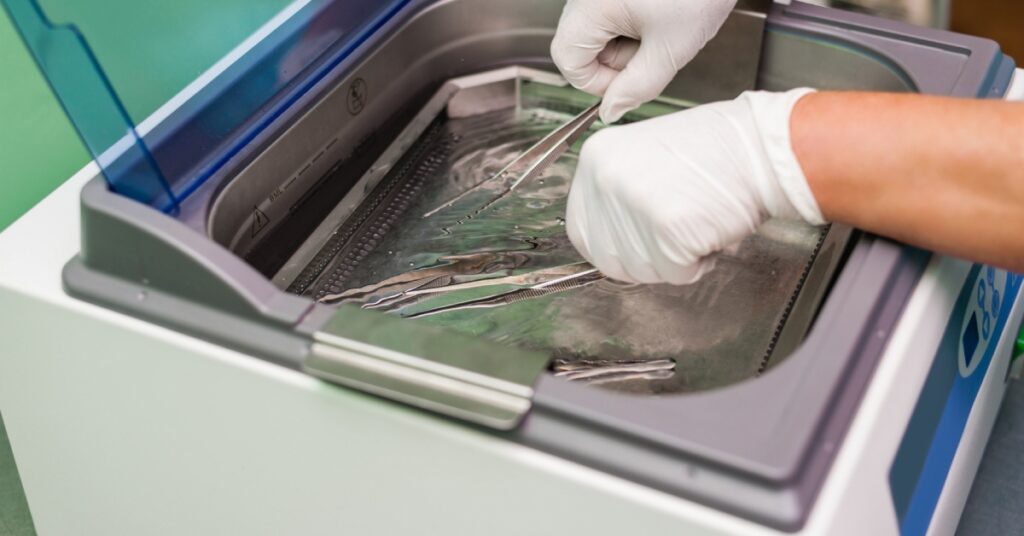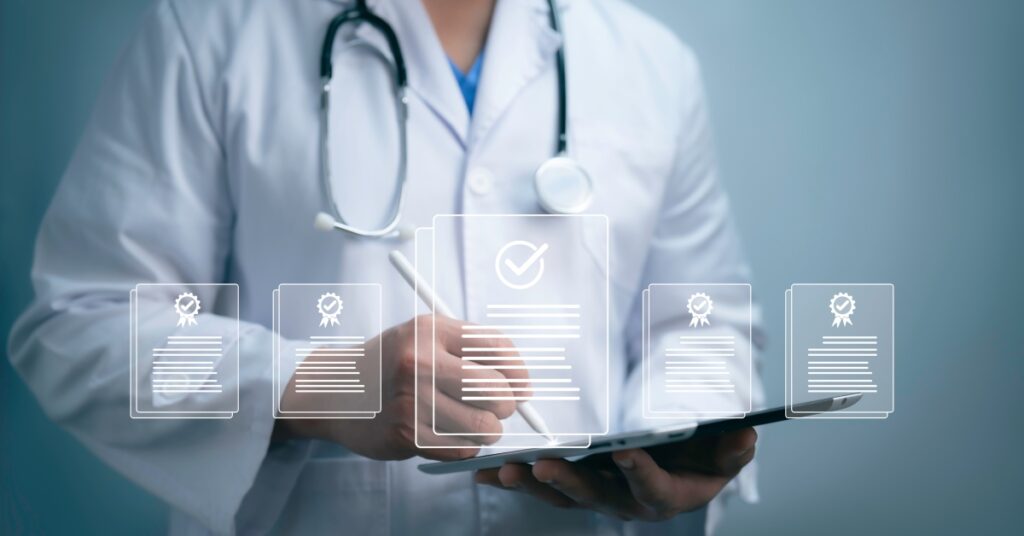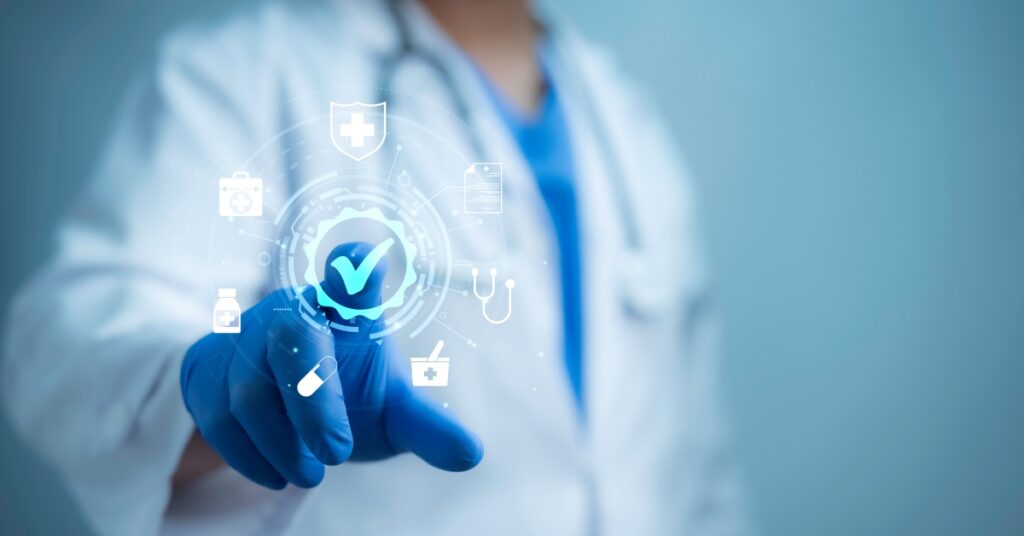Understanding regulatory requirements is one of the most crucial aspects of validating medical devices. Manufacturers must be able to navigate the complex and ever-changing world of industry- and location-based guidelines to ensure their devices are both compliant and ready for the market. One of the many regulatory sectors to pay attention to is reusable medical device cleaning validation. These regulations aid in the development of effective cleaning processes to ensure healthcare professionals can reuse certain medical devices without risk of cross-contamination, device degradation, or other problems.
The guidelines for reusable medical device validation have changed in the past few years. This started in 2015 with the release of the FDA guidance entitled Reprocessing Medical Devices in Health Care Settings: Validation Methods and Labeling Guidance for Industry and Food and Drug Administration Staff. This guidance document placed a strong emphasis on the phase of device cleaning and its validation. Learn more about the updated standards for reusable medical devices and make sure your processes are up to code with this comprehensive overview.
The Importance of Regulatory Guidelines
Clear standards are essential for providing consistent guidelines throughout manufacturing and testing processes, ensuring that medical devices are safe and ready for use in real-world settings. This is crucial for preserving patient health, as any lapse in the devices’ reprocessing can result in harmful pathogens remaining on devices, which may lead to infections.
This makes device cleaning validation even more important. In this study, rigorous testing and documentation are necessary to prove that the cleaning methods healthcare professionals implement for reusable medical devices are consistently effective.
The Need for Updates in Cleaning Validation Regulations

Despite its importance, there are significant challenges in standardizing cleaning validation processes. Existing standards often lack specificity, leaving room for interpretation and inconsistency. Additionally, the rapid advancement of medical technology means that new types of devices are continually being introduced, each with potentially unique cleaning requirements that may not be adequately addressed by current standards.
Clear cleaning validation standards are vital for ensuring patient safety. Without them, healthcare providers cannot reliably determine whether a reusable device is safe for use, potentially exposing patients to harmful contaminants.
Regulatory bodies play a crucial role in defining these standards and ensuring compliance. In recent years, updates to regulatory documents have created clearer, more comprehensive guidelines regarding cleaning validation processes. Understanding these updates, the impact they have on the industry, and the room they leave for potential future changes is key to implementing and maintaining compliant validation standards in your own medical device manufacturing processes.
Association for the Advancement of Medical Instrumentation Guidelines
The Association for the Advancement of Medical Instrumentation (AAMI) is an organization that seeks to promote the development, management, and use of safe and effective medical technology solutions. In 2022, AAMI released a new standards document known as AAMI ST98. This contained a set of guidelines clarifying the requirements and practices for reusable medical device cleaning validation.
Before this document, however, there was AAMI TIR30, which guided manufacturers and third-party validation labs in device cleaning studies. This previous documentation presented recommendations for processes, materials, test methods, and acceptance criteria for medical device cleaning validation. The problem with AAMI TIR30 was that it provided overall guidance but not enough specificity on the execution of the validation, the sample size, or the number of controls to make the study valid.
With the updated AAMI ST98 standard, medical device manufacturers now have unique and specific guidelines to use in cleaning validation processes for reusable medical devices. This creates a more concise validation process that makes it easier to navigate regulatory requirements and develop safe, thoroughly tested products.
AAMI ST98

AAMI ST98 contains two main sections. The normative section dictates the requirements for cleaning validation processes. These requirements include:
- Product families
- A definition of the cleaning process
- Test soil selection
- Test soil application
- Rules for simulating use on samples
- Rules for types of controls and how to use them
- Test method validation guidelines
- Guidelines for sample sizes
- Endpoints for cleaning validation
The second section of AAMI ST98 is the informative section, which contains guidelines for applying the above requirements to specific testing procedures. This outlines test methodologies for professionals to consider during cleaning validation processes, including specifying details such as sample sizes, controls, and guidelines for interpreting data.
Other Changes in Standards
Although AAMI ST98 is considered one of the biggest standard updates for reusable medical devices, there have been many other document revisions and updates over the past several years. This is a continuous process, where standards are typically revised or reaffirmed every five years. These changes are gradually addressing some concerns and questions in the reusable medical device sector. Below are a few of the elements making an impact on updated regulatory documentation.
Patient and Human Factors
One challenge that affects all aspects of the medical industry is that every patient is unique. This means there are different requirements to consider in every individual patient case.
How does this affect reusable medical device regulations? Manufacturers must find ways to address human factors in their validation processes. Regulatory revisions and updates can account for the undermining factors of individual patient variables to create more comprehensive validation processes. This, in turn, encourages more responsible manufacturing of products that are safer for a wider range of patients.
Device End-of-Life Assessments
End-of-life assessments or limits of reuse are another issue that recent regulatory changes are attempting to address. These assessments help manufacturers define how many times healthcare professionals can reprocess (use, clean, and sterilize) a reusable medical device before it loses its efficacy.
This helps determine the lifespan of the device. It also creates clear, accurate information about how a device degrades over time, allowing healthcare professionals to safely determine when a tool has reached the end of its life cycle and needs to be disposed of instead of cleaned, sterilized, and reused.
Future Trends and Opportunities
Though these updates are incredibly useful for industry professionals and their patients, there is still room for further clarification and guidance surrounding reusable medical devices. One of the biggest factors to be aware of is the current disconnect between national and international guidelines. Each country around the world believes their standards are the correct ones to follow. AAMI ST98 addresses regulations for the FDA; following these guidelines helps you meet FDA criteria, but that doesn’t necessarily mean your product has met the requirements for an international market. Therefore, it’s best to assess each market individually.
The lack of reusable medical device cleaning validation guidelines from the International Organization for Standardization (ISO) makes it more difficult to navigate regulatory processes during device validation. However, United States and European regulatory standards are becoming increasingly aligned over time, meaning there is opportunity for AAMI ST98 to become or influence an ISO standard for medical device cleaning procedures. This will help create a clearer and more consistent regulatory process across the board.
HIGHPOWER Medical Device Validation Services
HIGHPOWER can help you navigate the world of medical device regulations and device validations. Our cleaning validation services follow AAMI and FDA guidelines to create a compliant testing process for your product. Learn more about our medical device validation testing services when you talk to the team at HIGHPOWER today.
